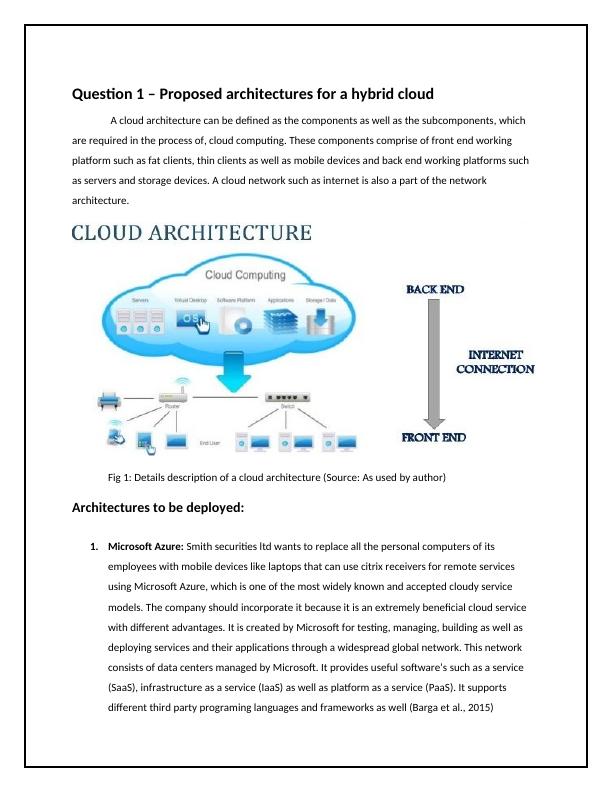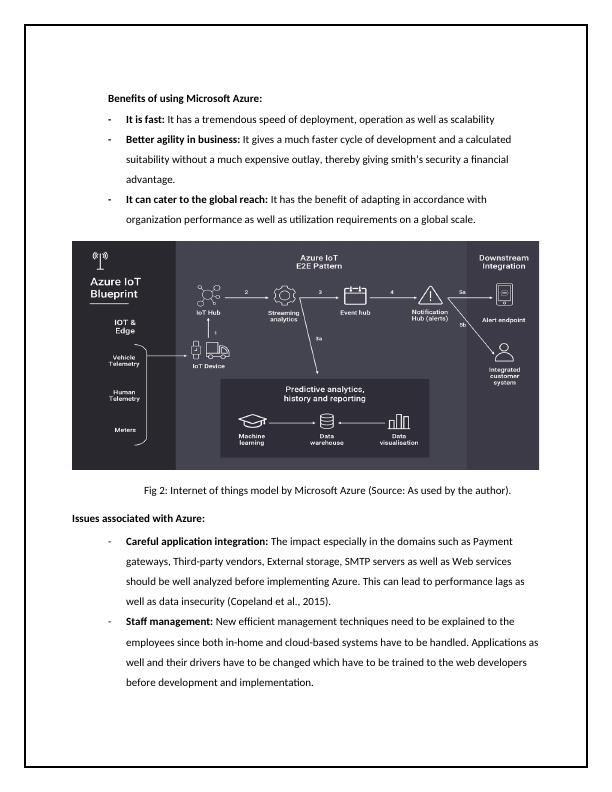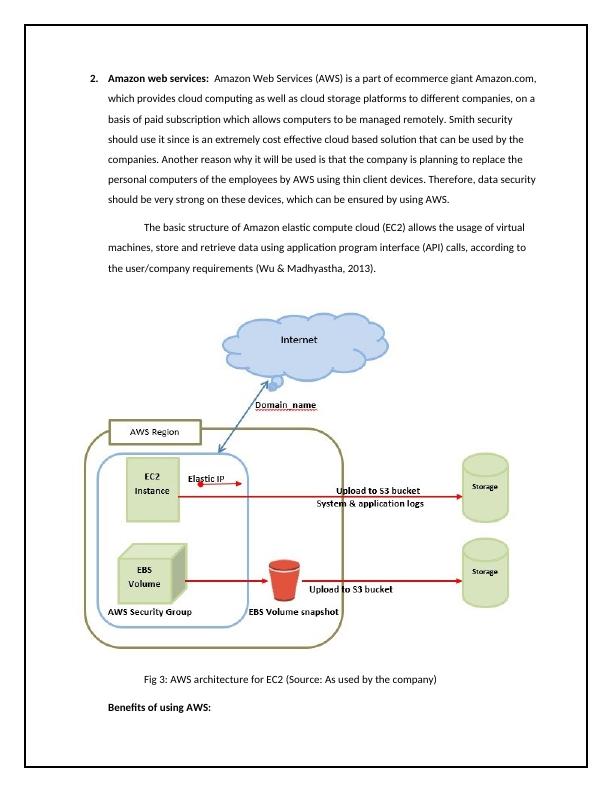Proposed Architectures for a Hybrid Cloud: Microsoft Azure and Amazon Web Services
7 Pages2176 Words345 Views
Added on 2023-06-03
About This Document
This article discusses the proposed architectures for a hybrid cloud, specifically Microsoft Azure and Amazon Web Services. It highlights the benefits and issues associated with each architecture, as well as the risks associated with desktop as a service (DaaS) and general precautions for information security.
Proposed Architectures for a Hybrid Cloud: Microsoft Azure and Amazon Web Services
Added on 2023-06-03
ShareRelated Documents
End of preview
Want to access all the pages? Upload your documents or become a member.
Cloud Computing On AWS and Azure
|17
|2896
|448
Assignment Linux Server Administration
|5
|667
|48
Cloud Computing: Web Server Solutions, Office Automation, and Cloud Models
|17
|1370
|21
Integration of Cloud Services
|21
|670
|482
Smart applications on cloud infrastructure
|21
|4374
|20
Comparison of AWS and Azure Services
|8
|1313
|86



